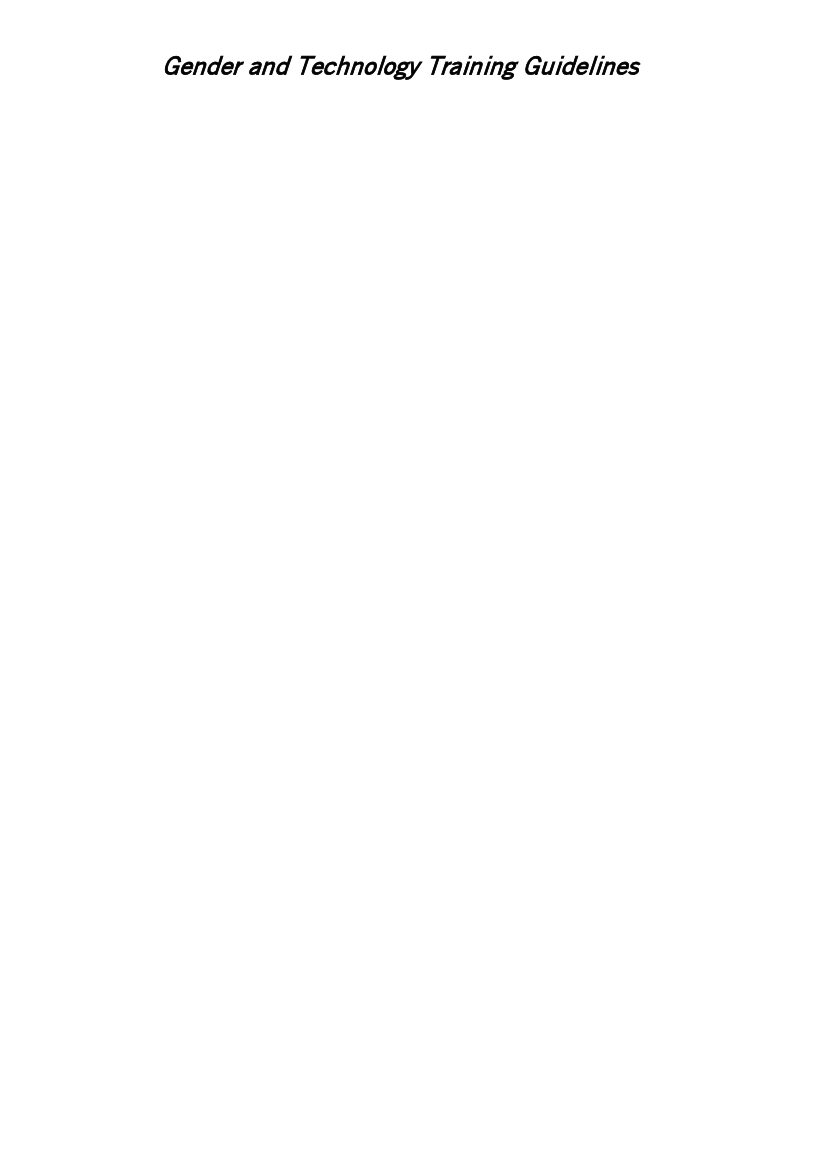
Gender and Technology Training Guidelines
SESSION 18 - Handout
STEPS IN GENDER ANALYSIS
(Information for this handout was drawn from Gender Issues in Animal Traction: A handbook
published by ATNESA and edited by Lotta Sylwander and Roger Mpande)
STEP 1 -IDENTIFYING GENDER ROLES
Gender planning recognises that women have a triple role: reproductive, productive ad
community managing activities. Men commonly take responsibility for productive
activities and community politics roles. Refer to handouts used in previous sessions
for listing of these roles. List these roles for men and women in your community.
Consider
Where the activities take place
When they are done
How much time it takes
Why women do some tasks and men others
How roles and responsibilities differ by age, ethnic or social group
How roles and responsibilities have changed over time
Key issues for technological intervention
What technologies are being used for what activities?
Which activities are time consuming and labour intensive? Who does them?
Can the introduction of technology save time? What implications will this have
on labour?
What will the impact of the technological intervention be on women’s
reproductive and productive tasks?
Will the introduction of the technology help reduce the labour input into
reproductive tasks?
Will the introduction of the technology change the existing division of
work?
Will the project affect basic services and needs such as water, fuel, and
transport? What will be the impact of these effects on women’s lives? on
men’s lives?
What implications does this information have for designing training
programmes and other project activities?
83